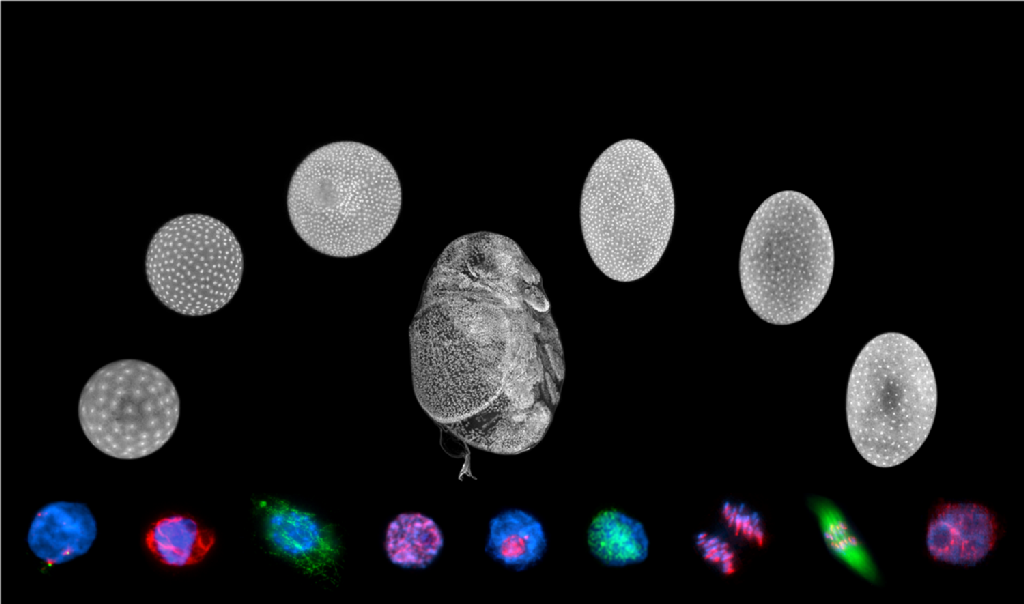Diapause
Diapause is a form of dormancy that is genetically predetermined to allow animals to overcome harsh environmental conditions. It is induced by predictive environmental cues bringing cellular activity levels into a state of suspended animation. Entering diapause requires organismal, molecular and cellular adaptation to severely reduced energy flows. Cells must therefore have evolved strategies that prepare them for periods with limited metabolic resources. However, changes that occur on the (sub-)cellular level have not been thoroughly described.
In Daphnia , diapause is often coupled to sexual reproduction (albeit by some obligate parthenogenetic populations as well. When environmental conditions are favourable, Daphnia reproduces via parthenogenesis and the clonal embryos complete their development in the mother's brood chamber to be released as fully developed juveniles.
Once the environmental conditions start to deteriorate (e.g. crowding, photoperiod changes, temperature changes, and food limitation), Daphnia females switch their reproductive strategy so that, genetically identical males are produced first and then haploid oocytes are produced. After sexual mating, these haploid oocytes will be fertilized by haploid spermato- zoa, from which diploid embryos will develop under the
echanical protection of a robust coat termed the ephippium. This heavily pigmented structure is formed by the maternal carapace. In the subsequent molting cycle of the Daphnia female, the ephippium with the embryos (usually two) is shed and often deposited in the sediment. Sexually produced embryos are thus destined to go into diapause when the embryo reaches gastrula. This strategy allows the increase of genetic variability, and is coupled with the 'wait-it-out' approach so that genotypes that meet the environmental requirements hatch to form new parthenogenetic populations. The entrance into this state of suspended animation requires organismal, cellular and molecular alterations at severely reduced energy flows. Daphnia can rest in sediments for many years, which means that the sub-cellular organelles and the cytoskeleton matrix must be kept minimalistic, yet with the capability to restart embryo development.
In this project we study, the (sub)-cellular mechanisms, that allow the initiation of diapause and the beaking of diapause.

